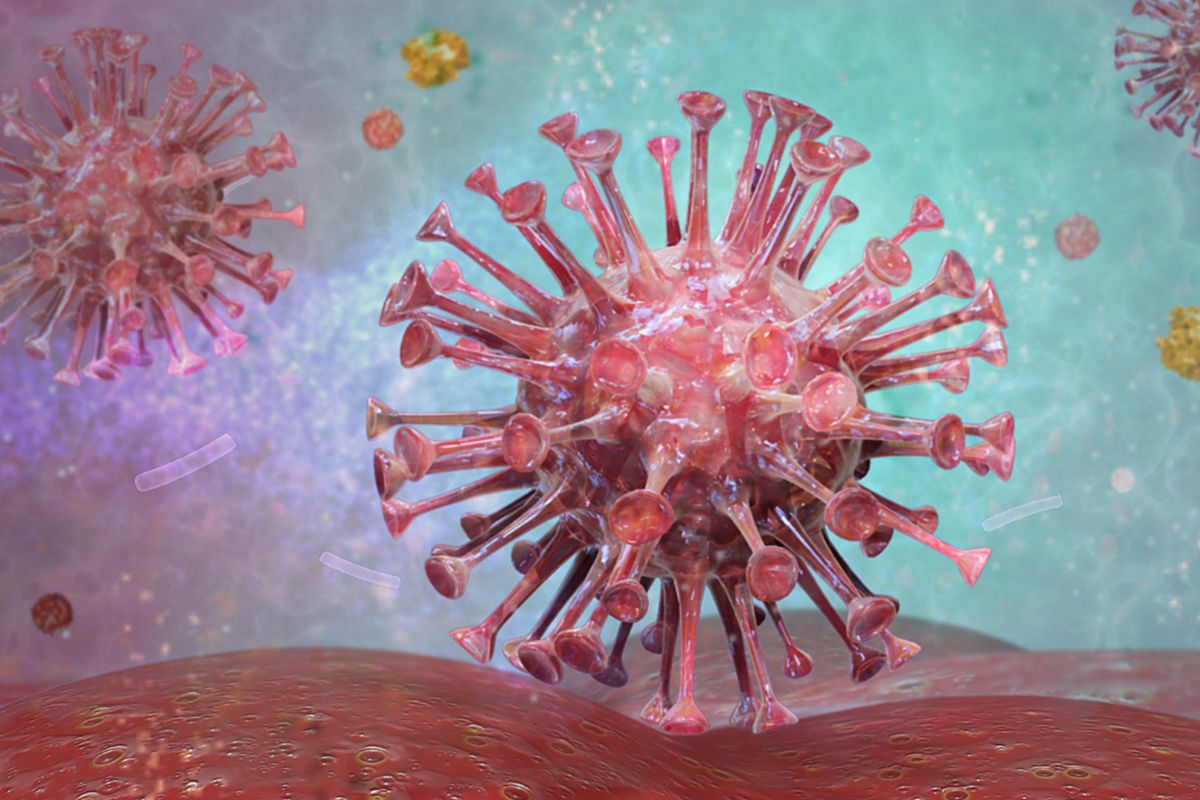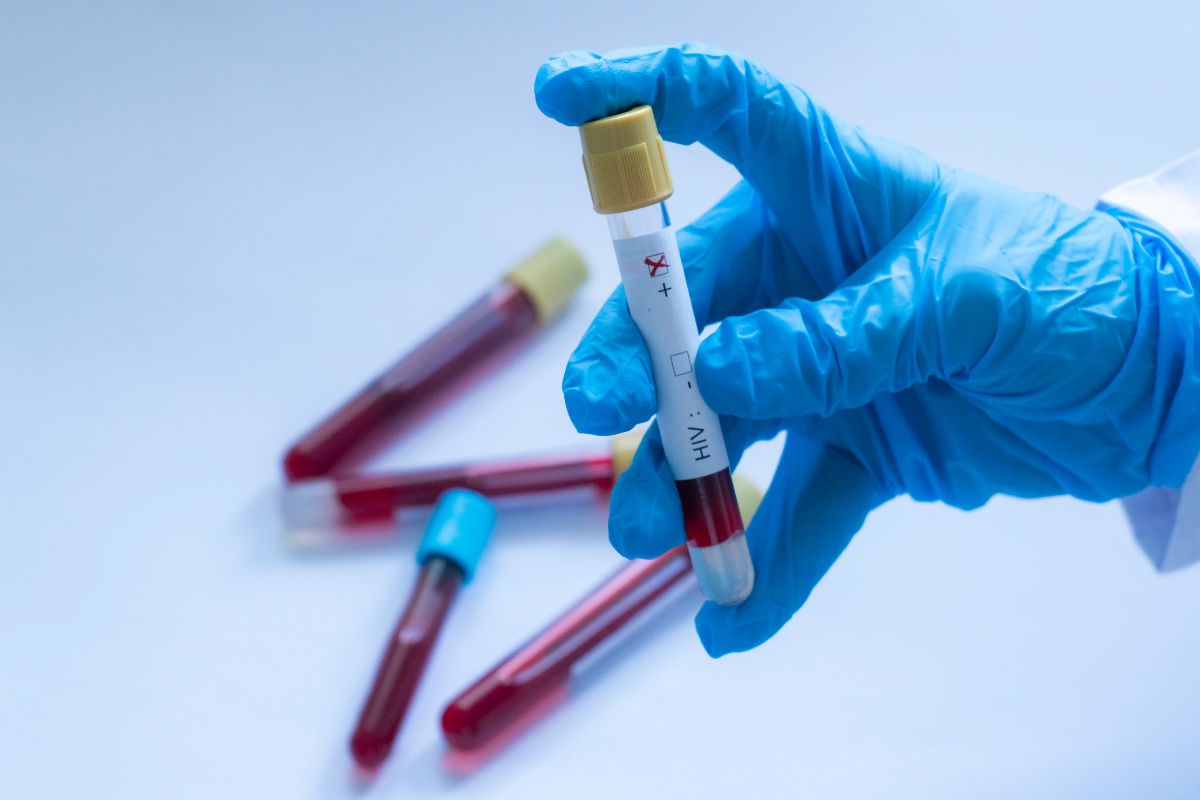We tend to know bacteria, viruses, and parasites that cause conditions and diseases by one definitive scientific or common name.

This can be the scientific name of the disease – like Tuberculosis – or the vernacular or common name – like consumption – but we always associate that name with that illness.
However, that is not necessarily accurate, as many illnesses have multiple different variants that are slightly different or vastly different from one another.
In the case of HIV, there are two different kinds of HIV: HIV 1 and HIV 2.
Considering how deadly this disease can be, it seems like there would be more recognition of both variants than there is today.
As such, we have decided to create an article to detail HIV1 and HIV2 and show the difference between the two of them.
HIV: An Overview
HIV is an acronym of the name Human Immunodeficiency Virus, and it is a virus that belongs to the Lentivirus genus in the family of Retroviruses.
The Lentiviruses are characterized by their long incubation periods before they become fully active – and as such deadly – in the host’s (infected individuals) body, whereas the Retroviruses are characterized by their use of the reverse transcriptase enzyme to insert a copy of their own DNA into the host cell.
In the HIV virus, the DNA inserted into the host cell is thought by the cell to be its own, and so it continues to replicate and reproduce from this DNA.
The DNA tricks the cell into reproducing the virus, thus spreading it around the body.
The virus then spreads to the immune system cells, where it attacks them and kills off key cells, especially the CD4 T cells.
These cells act as warning signals, telling the cell and the body when it has encountered an unknown or dangerous pathogen, and they trigger the cell’s own defenses.
Over a very long period of time, these cells start to become critically low in number, and after they reach a point where they cannot be replenished, the virus develops into the AIDS (Acquired Immunodeficiency Syndrome).
This is the point when living without treatment for the disease becomes impossible.
The slow, but inevitable progression of the disease and the systematic attack on the cells and body’s immune system make the disease incredibly difficult to stop and treat, as they encourage other pathogens to attack the body.
Since the body struggles to defend itself against even minor infections with these viruses active, an infected person has to be ever vigilant with their health.
The Types Of HIV

As we mentioned earlier, there are two types of HIV: 1 and 2.
While both types of the virus are long-term conditions that are manageable, they are incredibly genetically distinct, with only a 55% sequence identity shared between them.
This means that although they are related, they have differences between them which can be looked at:
Geography
Almost every person who has contracted the HIV virus in the world has contracted HIV 1. Up to 95% of HIV sufferers have HIV 1, whereas only 5% have HIV 2.
With the world being far more globalized today, HIV 2 is traveling faster than before and spreading more quickly, but it is largely confined to its native region of West Africa.
The other places that is has begun to appear in recent years are the United States, Europe, and India, but it has not really gone beyond these places into other reaches of the world.
Transmission
HIV 1 is the far more virulent of the two viruses and travels far faster from person to person.
The most common way to transmit the disease to another person is through sex for both viruses, but HIV 2’s transmission rate through this method is about 5 times lower than that of HIV 1.
Similarly, HIV 1 is almost guaranteed to be transmitted from parent to child, should the child be conceived after the person has contracted HIV.
However, with HIV 2 the transmission rates are between 20 to 30 times lower than those of HIV 1 during conception or gestation.
Both viruses are transmitted through the exchange of bodily fluids – blood, milk, or sexual fluids – but the risk is far lower with HIV 2 than it is with HIV 1.
Tests
HIV 1 can be detected through a simple blood test, and it is a routine and simple procedure.
The genetic difference between HIV 1 and 2 though, means that the test can sometimes not pick up on the presence of HIV 2 in the bloodstream.
As such, an antigen or antibody test is necessary for those that may be at risk.
Treatment
Due to the genetic differences between HIV 1 and 2, the treatments can be less effective for HIV 2.
HIV 1 is far more widespread, documented, and studied than HIV 2 and, as such, understanding what it does and how to treat it is a lot easier than with HIV 2.
This means that HIV 2 is, unfortunately, resistant to certain drugs that can treat HIV 1.
There are two types of drugs that HIV 2 is resistant to that we know of:
– Enfuvirtide.
– Non-nucleoside reverse transcriptase inhibitors.
Due to the lack of knowledge of HIV 2 and the resistant nature of the virus, doctors may prescribe a variety of drug combinations and monitor the effect that they have on the patient.
They will also keep an eye on CD4 T cell counts to make sure that they are maintaining their level and to see whether the drugs are having a positive effect as well.
Conclusion
HIV 1 and HIV 2 are part of the same family and genus of viruses.
While their effect is almost identical on the body, the differences between the genetics, transmission, and viral load between these two viruses makes treatment different and sometimes difficult between the two.
However, people living with either kind of virus can be treated very effectively in the modern day and go on to live very healthy lives.
- Understanding Male Reproductive Health: A Complete Guide - February 2, 2025
- Simple Healthy Skin Habits for Radiant Skin - December 6, 2024
- Unlocking the Connection Between Nutrition and Mental Health - December 3, 2024








